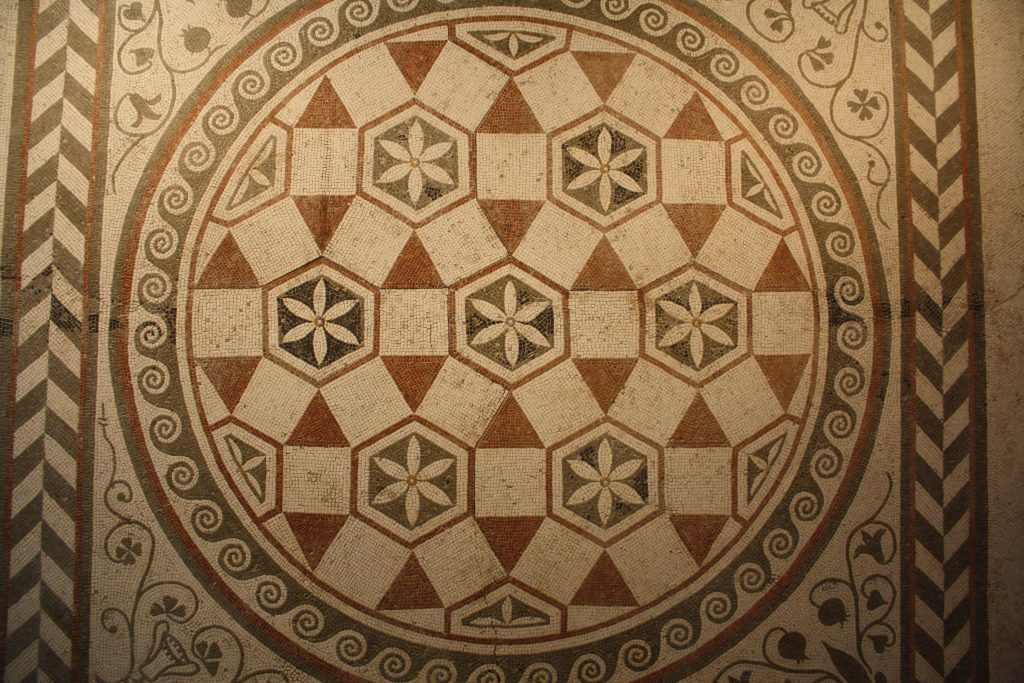Transform your mosaic masterpiece from ordinary to extraordinary with these professional grouting secrets that will make your tile work sing
Understanding Mosaic Grouting Basics
Grouting is more than just filling gaps between tiles – it’s an essential art form that can make or break your mosaic project. The process of grouting serves multiple crucial functions, transforming your carefully placed tiles into a cohesive, durable, and visually stunning masterpiece. Studies show that properly grouted mosaics can last over 100 years, making it a critical step in preserving your artwork. The grout not only protects the edges of your tiles from chipping and damage but also creates a waterproof barrier that prevents moisture from seeping behind the tiles. This protective layer is particularly important in areas exposed to water or weather conditions. Moreover, the right grouting technique can enhance the overall design by either creating subtle transitions between tiles or boldly defining each piece, depending on your artistic vision.
Essential Tools and Materials
- Grout: Choose between sanded and unsanded varieties based on joint width
- Rubber Float: For applying grout evenly across the surface
- Mixing Bucket: Clean, non-porous container for grout preparation
- Measuring Tools: For precise water-to-grout ratios
- Clean Sponges: Several for cleanup phases
- Microfiber Cloths: For final polishing
- Safety Equipment: Gloves, dust mask, and eye protection
- Grout Sealer: For protecting finished work
- Mixing Tool: Electric drill with mixing paddle or margin trowel
Preparing Your Mosaic Surface
Proper preparation is crucial for achieving professional results. Begin by thoroughly cleaning the mosaic surface, removing any dust, debris, or adhesive residue. According to industry experts, 80% of grouting problems stem from inadequate surface preparation. For porous materials like unglazed ceramic or natural stone, applying a penetrating sealer before grouting is essential to prevent staining. Allow the sealer to cure completely – typically 24 hours – before proceeding with grouting. Check that all tiles are firmly set and adhesive is fully cured. Repair or replace any loose tiles, as grouting won’t fix adhesion issues. Use painters tape to protect any adjacent surfaces that shouldn’t come in contact with grout.
Mixing the Perfect Grout
Achieving the ideal grout consistency is crucial for professional results. Start with a clean bucket and measure water according to manufacturer specifications – typically about 2 parts powder to 1 part water. Research indicates that improper mixing ratios account for 40% of grout failures. Add grout powder to water gradually while mixing to achieve a smooth, lump-free consistency similar to peanut butter. Avoid adding excess water, as this can weaken the grout and cause discoloration. Let the mixture slake (rest) for 10 minutes, then remix briefly before use. This resting period allows the chemicals to properly activate, ensuring optimal strength and workability.
The Professional Application Process
- Step 1: Load your rubber float with grout and apply at a 45-degree angle
- Step 2: Work in small sections, about 3-4 square feet at a time
- Step 3: Press grout firmly into joints with diagonal strokes
- Step 4: Remove excess grout with the float held at a sharp angle
- Step 5: Allow initial set for 15-20 minutes
- Step 6: Clean surface with damp sponge using circular motions
- Step 7: Perform final cleanup after 2 hours
- Step 8: Polish with clean microfiber cloth once dry
Common Grouting Mistakes and How to Avoid Them
Even experienced craftsmen can encounter challenges during the grouting process. Industry data shows that 65% of mosaic failures are due to common grouting mistakes. The most frequent error is using too much water during mixing or cleanup, which can weaken the grout and cause color inconsistencies. Another critical mistake is rushing the process – proper timing between application and cleanup is essential. Working in too large an area can lead to grout drying before proper tooling, while insufficient pressure during application can result in voids and weak joints. Avoid using excessive force when cleaning, as this can pull grout from joints. Remember to change your cleaning water frequently to prevent grout haze.
Cleanup and Finishing Touches
The cleanup phase is as crucial as the application itself. Begin initial cleanup approximately 15-20 minutes after grouting, when the grout has started to firm but remains pliable. Use a damp, well-wrung sponge to remove excess grout with light, circular motions. Professional tilers recommend changing cleaning water every 50 square feet to prevent grout haze. After the initial cleanup, wait about 2 hours before performing a final polish with a clean, dry microfiber cloth. Any remaining haze can be removed the next day using a commercial grout haze remover. Allow the grout to cure for 48-72 hours before applying sealer, which will protect against staining and moisture penetration.
Maintenance and Care
- Daily Care: Wipe surface with clean, damp cloth
- Weekly Cleaning: Use pH-neutral cleaner specifically for grout
- Monthly Inspection: Check for any cracks or wear
- Quarterly Deep Clean: Professional cleaning solution application
- Annual Sealing: Reapply grout sealer to maintain protection
- Avoid: Harsh chemicals, bleach, or acidic cleaners
- Repair: Address any damage promptly to prevent water infiltration
Expert Tips and Tricks
Professional mosaic artists and tile setters have developed numerous techniques to achieve superior results. According to industry surveys, these expert methods can improve grouting success rates by up to 90%. One key tip is to pre-seal natural stone or porous tiles with a penetrating sealer before grouting, making cleanup significantly easier. Another professional secret is to add a small amount of grout additive to enhance flexibility and stain resistance. For intricate designs, pros often use a grout bag (similar to a pastry bag) for precise application in tight spaces. When working with multiple colors of grout, always start with the lightest shade to prevent cross-contamination. Additionally, keeping a spray bottle of clean water nearby helps maintain optimal moisture levels during the cleanup process.
Conclusion
Mastering the art of grouting mosaic tiles requires attention to detail, proper technique, and patience. By following these professional guidelines and avoiding common pitfalls, you can achieve stunning results that will stand the test of time. Remember that successful grouting begins with thorough preparation and ends with proper maintenance. Whether you’re creating a decorative mosaic piece or installing a functional tile surface, these expert insights will help you achieve professional-quality results. With practice and attention to detail, you’ll be able to transform your mosaic projects from simple tile arrangements into lasting works of art that showcase both beauty and craftsmanship.
Sources
[1] https://mosaicvillage.co.uk/a-guide-to-grouting-mosaic-tiles
[2] https://mosaicartsupply.com/how-to-grout-mosaic-art/
[3] https://helenmilesmosaics.org/mosaic-tutorials/grouting-mosaics/



